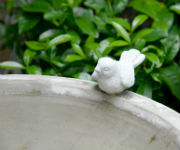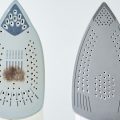
In this article, we delve into one common oven cleaning problem and that’s how to effectively clean the hard-to-reach and often overlooked area of the appliance – the roof.
Over time, the oven ceiling can accumulate grease, spills, and food residue, becoming a breeding ground for bacteria. Regular cleaning inside the roof of the oven not only contributes to a healthier cooking environment but also prevents the transfer of unwanted flavours to your dishes. So, keeping the top of your oven clean is beyond aesthetics. It directly impacts both food hygiene and the performance of your appliance.
Now, let’s explore practical tips to effectively clean the top of your oven.
Table of Contents
1. Gather your supplies
Before you begin, gather the necessary cleaning supplies and unplug your oven. You’ll need:
- Scraping tool
- Baking soda
- Water
- Microfiber cloths or a sponge
- An old toothbrush or long-handled scraper or brush
- Soft towels for drying
2. Clear the surface
With the help of the scraping tool try to remove any loose debris or crumbs from the oven top. Scrape around and in-between the element taking care not to damage it.
If you haven’t cleaned your oven in a while, it is possible to have solid burnt grease stuck to the oven ceiling. In this case, you can try loosening the debris for easier removal. You can try:
- Take a deep container which is oven-proof.
- Fill the container with hot water.
- Add one sliced lemon to the water.
- Leave in the oven on low heat for about 30 minutes.
There are no chemicals involved and you won’t have to scrub as hard later on to lift the dirt off the inside of the oven’s roof.
3. Apply the cleaning solution
The biggest issue with cleaning an oven’s ceiling is how to get to the roof without affecting the grill element. As you probably already know the grill of your oven should not be treated with abrasive or highly aggressive chemical cleaners. Not only can these damage the grill and compromise the appliance’s performance, but they could be flammable.
If the grill is in poor condition and requires care, only specialised oven cleaners can be used, according to the label’s instructions. There’s also the option to prepare a homemade oven-cleaning solution by combining 2 cups of baking soda with ¾ cup of warm water.
Add a few drops of citrus-scented essential oil to your baking soda paste to make your oven smell really fancy. Gently apply the baking soda paste over the top of the oven by avoiding the heating element.
4. Let it sit
Let the homemade cleaning paste sit in the oven for at least 5-7 hours. Some people even prefer to leave it overnight, but if you don’t feel like waiting a few hours should be enough.
This will allow the baking soda to further loosen grease and grime, so you won’t need to scrub as hard.
5. Scrub and detail
Use a sponge or microfiber cloth to scrub the surface, paying extra attention to areas with built-up residue. For intricate areas, use an old toothbrush or a small brush to ensure a thorough clean.
If you get any of the paste on the grill element, make sure to wipe it right away.
6. Wipe clean
Dampen a clean cloth with water and wipe away the cleaning solution, residue, and any remaining debris. Repeat this step until the surface is fully clean.
7. Dry thoroughly
Use soft towels to remove any remaining moisture. Leave the oven door open for a couple of hours to let the inside air dry. Before using the oven, make sure the top is completely dry.
It’s good to do a test run on an empty oven after the cleaning to see if it’s working as expected. If everything looks good, you can carry on with your baking plans.
Save yourself the elbow grease and leave the dirty work to us!
Enter your postcode to view our rates and availability in your area.
For questions about the services we offer visit our main site
Takeaways
- Regular cleaning of the oven’s interior ceiling not only promotes a healthier cooking space but also prevents the transmission of unwanted tastes to your cooked dishes.
- Always use homemade baking soda paste, avoid harsh chemicals near the heating element.
- Before cooking, it’s important to check and confirm that the top surface is completely dry to avoid any potential damage caused by lingering moisture.









Leave a Reply